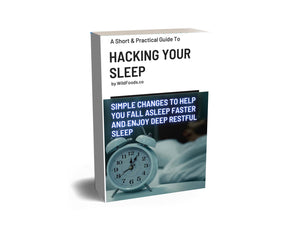How To Save Money on a Carnivore Diet

Yes, animal foods can be expensive, especially quality ones. This is why most people think a carnivore diet is expensive. A carnivore diet can be expensive, but it doesn't have to be.
That said, I still recommend you buy the best quality animal products you can afford. This will do wonders for your health and results, and you'll support small suppliers that respect their animals and the environment that gives them to us.
Let's cover some ways to save money on a carnivore diet.
Canned seafood
Canned seafood is one of our biggest bangs for your buck in terms of simplicity, shelf-life, and pure unadulterated nutrition.
My favorite carnivore seafood staples are canned muscles, sardines, mackerel, herring, and cod liver.
Tips for buying canned seafood:
Avoid seafood packed in Olive oil. Many times you aren't getting olive oil, and when you are, it's usually oxidized. Always get seafood in water with sea salt or no salt.
Find bulk packs to save. You can find bulk bags of canned seafood online and save on per-unit costs.
My favorite recipe for enjoying canned seafood and ensuring I eat enough of it is seafood pate.
Organic grass-fed, grass-finished ground beef
Beef is a staple in most carnivore diets.
Find a local farmer or an online supplier you trust. Then stick with them.
I currently source from Crowd Cod, Alderspring Ranch, and my local Austin farmer, Bill. (Both links are affiliate links. It supports the site if you buy through my link. Ty.
Stock up whenever you can get a deal.
Frozen fish
Wild-caught salmon can be a bit pricey when fresh, so we usually get it frozen. You can find wild-caught salmon bags for $20-30 full of fillets. Then pop one or two of those in the fridge the night before, and it'll be ready to cook in no time.
Other frozen fish options include cod, Mahi Mahi, tuna, and flounder.
Tips for buying seafood:
- Avoid tilapia.
- Don't buy farmed since it's one of the most toxic foods you can buy.
- Costco bulk meat
Costs and other membership club stores usually have good food options. Costco has been upgrading its organic and grass-fed game for a while now.
The meat they pack and sell themselves is not good. So I opt for smaller brands like organic grass-fed sausages, organic hot dogs, etc.
Their seafood is also often reasonable, with much of it being wild-caught.
An advanced strategy is buying an entire beef tenderloin and breaking it down at home. There is a technique to this, which you can find on YouTube, but you end up with many meals.
Another thing you can often find is large roasts; pork shoulder, beef roasts, and whole chicken.
Drop these in a slow cooker with salt and spices until fork tender. Then partition these out into 4-6oz servings, and you'll now have 5-10 ready-to-go meals in your fridge.
The key to reheating these is to fry them in a pan with some fat, like carnitas. Delicious.
Make fat out of your beef trimmings and stock from your chicken carcass.
Instead of throwing away the fat and tension you remove from your steak, put a batch in a pot and heat it on low until it renders out. Then strain and store in the fridge.
That's a bunch of extra calories you otherwise would have thrown out.
The same is true for any leftover kitchen scraps like onion tops or carrot heads and, on the animal side, fish heads and chicken leftovers. Take these scraps and make a deep and rich broth.
Make your jerky or pemmican
This is one of my favorite fat-loss and appetite-suppressing strategies. Make a bunch of homemade jerky or pelican and snack on that before each meal.
This will ZAP your appetite, causing you to eat less at mealtime.
Most people think they need a dehydrator, but you don't. You can do this on your own with a sheet pan and wire rack. Super easy.

Frozen organic beef patties
These are usually budget-friendly and keep well in the freezer.
Costco has grass-fed organic sometimes, so I grab them anytime I can. Whole Foods usually has some organic grass-fed frozen patties.
Split a cow with a local farmer or family
There are many cow-share programs where you can buy 1/4 or 1/2 of a cow to save a ton of money. I've heard of people getting their beef for as little as $3 a pound.
You can store this in a cheap chest freezer in your garage.
How to save on a carnivore diet
Saving money on any diet involves planning and thinking in bulk. Using every part of the animal and techniques like dry brining will ensure you have no wasted food.
The thing about a carnivore diet that most people don't consider is how much plant food goes bad. How often do you find rotten plant foods in your fridge? In our household, all the time.
Yet when we prepare animal products, nothing goes to waste. The trimmings are used or given to the dog, and we eat every ounce.
If you pay attention to your sourcing and plan, a carnivore diet can be the same or cheaper than any other diet.
Frequently Asked Questions on Carnivore Diet
Can a carnivore diet be expensive?
A carnivore diet can be expensive, but it doesn't have to be. By strategically planning and buying in bulk, you can make it budget-friendly.
What is the best quality meat to buy on a carnivore diet?
Organic, grass-fed, and grass-finished beef is highly recommended. Please find a local farmer or an online supplier you trust and stick with them.
What is the healthiest canned seafood to buy?
Canned mussels, sardines, mackerel, herring, and cod liver are some of the healthiest options. Always opt for seafood packed in water with sea salt or no salt.
Is wild-caught fish better than farmed fish?
It is recommended to avoid farmed fish as it can be one of the most toxic foods. Always opt for wild-caught fish.
Are there affordable options for meat at Costco?
Yes, Costco has been upgrading its organic and grass-fed game for a while now. They also have options for organic grass-fed sausages, organic hot dogs, and more.
How can I make use of leftover beef trimmings?
Instead of throwing away the fat and tension you remove from your steak, render it and store it in the fridge. This provides a bunch of extra calories you otherwise would have thrown out.
How can I suppress my appetite on a carnivore diet?
Making homemade jerky or pemmican and snacking before each meal can help suppress your appetite.
Can I make beef patties at home?
Yes, homemade frozen organic beef patties are budget-friendly and keep well in the freezer.
What are some ways to save money on a carnivore diet?
Planning and buying in bulk are two key ways to save money. Also, consider making your jerky or pemmican, using beef trimmings to make fat, and opting for frozen organic beef patties.
How can I save money on beef?
Many cow-share programs allow you to buy 1/4 or 1/2 of a cow to save money. You can store this in a cheap chest freezer in your garage.

Interesting Facts
You can save money by buying in bulk and using every part of the animal.
Canned seafood can provide a big bang for your buck regarding nutrition.
Homemade jerky or pemmican can help suppress your appetite.
Utilizing beef trimmings and kitchen scraps can help reduce waste and provide extra calories.
Costco and other membership club stores often have good organic and grass-fed meat options.
Related Studies
The Health Benefits of a Carnivore Diet
This study discusses the potential health benefits of a carnivore diet, including improved mental clarity, decreased inflammation, and weight loss. Link: https://carnivoreaurelius.com/carnivore-diet-benefits/
Impact of Carnivore Diet on Environmental Sustainability
This study explores how sourcing meat from local suppliers could impact environmental sustainability positively. Link: https://www.colorado.edu/ecenter/2021/04/01/being-sustainable-carnivore
Nutritional Adequacy of a Carnivore Diet
The study investigates the nutritional adequacy of a carnivore diet, concluding that it can meet essential nutrient requirements when appropriately planned. Link: https://pubmed.ncbi.nlm.nih.gov/32833688/
The Role of Red and Processed Meat in Health and Disease
This study explores the association of red and processed meat with various health outcomes, providing a balanced view of their role in a healthy diet.
Link: https://www.tandfonline.com/doi/full/10.1080/10408398.2022.2123778
Impact of Carnivore Diet on Human Gut Microbiota
This study examines how a carnivore diet can alter gut microbiota composition, potentially influencing health.
Link: https://www.allthingscarnivore.com/what-will-the-carnivore-diet-do-to-your-gut-microbiome/
Conclusion
While it's true that a carnivore diet can be expensive, particularly when prioritizing high-quality animal products, there are many strategies one can adopt to keep costs down.
From buying in bulk to repurposing every part of the animal, it's possible to make a carnivore diet affordable and nutritious.
Ultimately, the key lies in intelligent planning and efficient utilization of resources. Moreover, it's important to remember that investing in quality food is also an investment in your health.
Shop the entire Wild Foods line of high-quality and healthy superfood ingredients from small-batch producers worldwide!
Articles you might be interested in
- The Wild Foods Diet
- Why Diets Fail – The #1 Secret To Nutrition
- The Natural Human Diet? (Yes, There Is One!)
